CONTENTS  CHOOSE IT to
CHOOSE IT to
LOSE IT! The Ultimate Pocket Guide to Save 500 Calories a Day! With Amy Brightfield  When it comes to successfully losing weight and consistently eating well, the secret is MAKING THE RIGHT CHOICES.
When it comes to successfully losing weight and consistently eating well, the secret is MAKING THE RIGHT CHOICES. 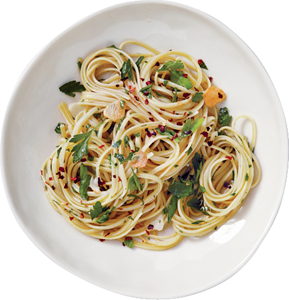 And when we say choices, we arent talking about picking a bland turkey sandwich over the cheeseburger youre craving. We mean opting for a hearty burger with toppings that has 300 fewer calories. Or going to your favorite Italian restaurant and ordering pasta, but customizing the rest of your mealand even the dishso you eat 400 calories less than you typically would. You can absolutely ditch extra calories and eat better without sacrificing what your taste buds crave.
And when we say choices, we arent talking about picking a bland turkey sandwich over the cheeseburger youre craving. We mean opting for a hearty burger with toppings that has 300 fewer calories. Or going to your favorite Italian restaurant and ordering pasta, but customizing the rest of your mealand even the dishso you eat 400 calories less than you typically would. You can absolutely ditch extra calories and eat better without sacrificing what your taste buds crave. 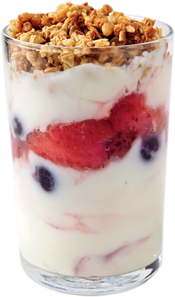 Choose It to Lose It is a real-world guide to effortlessly downsizing your calorie count.
Choose It to Lose It is a real-world guide to effortlessly downsizing your calorie count.
Cutting calories, followed by regular exercise, is the most effective way to kick-start weight loss, and making better-for-you food decisions throughout the day can easily save you 100 calories at breakfast or 70 on a drinkleading you to cut 300 to 500 calories a day without even thinking about it. Youll discover that small changes like these, made every day, can add up to losing 10 or 20 pounds a year, and keep you eating better for a lifetime. This book helps you make smart choices no matter where you find yourselfwhether youre in the snack aisle, at the drive-thru, or in front of your own fridge. The best part: THIS BOOK WORKS WITH ANY DIET... Each chapter in this book offers suggestions on easy ways to avoid calorie bombs.There are tips on making any meal more nutritious, delicious recipe makeovers from Cooking Light magazine, and hundreds of healthier options to consider when you are on the go or at your favorite chain restaurant. Dip in and out of the book and use the information that makes sense for your lifestyle.
There is no one-size-fits-all formula for everyone. If you want to start small, try making simple changes for one meal, and then eventually for all of them. Research tells us that long-term behavior change is the result of small victories and little daily tweaks over a long period of time. Incorporate healthier eating choices, one at a time, until they become routine, and youll be headed to a trimmer waistline in no time.  DOWNSIZING YOUR DISHES CAN HELP YOU EAT LESS | Participants in a Cornell University study were given 34- or 17-ounce bowls for their ice cream. 7 NUTRITION MYTHS BUSTED With all the conflicting nutrition advice out there, its easy to get flustered when youre trying to make good food choices. 7 NUTRITION MYTHS BUSTED With all the conflicting nutrition advice out there, its easy to get flustered when youre trying to make good food choices.
DOWNSIZING YOUR DISHES CAN HELP YOU EAT LESS | Participants in a Cornell University study were given 34- or 17-ounce bowls for their ice cream. 7 NUTRITION MYTHS BUSTED With all the conflicting nutrition advice out there, its easy to get flustered when youre trying to make good food choices. 7 NUTRITION MYTHS BUSTED With all the conflicting nutrition advice out there, its easy to get flustered when youre trying to make good food choices.
We clear the air on seven nutrition myths that could be hampering your decisionsnot to mention standing between you and your favorite foods! Fried foods are always fatty. The Truth Is: It depends how you fry it. More nutritious coatings like panko crumbs and wholewheat flour help, as does the temperature at which you fry. For most foods, 375 is optimal; oil temperatures that are too low will cause foods to soak up more oil, increasing the amount of calories and fat. Organic foods are more nutritious. The Truth Is: Organic foods arent inherently more nutritious, although there are many good reasons to choose organic.
Research has shown that theres no significant nutritional difference between conventional and organic crops and livestock. There is, of course, still the issue of trace amounts of pesticides and herbicides, so wash conventional produce carefully. Eating eggs raises your cholesterol. The Truth Is: Dietary cholesterol, or cholesterol found in foods including eggs, doesnt greatly affect your bodys cholesterol levels. What does? Saturated and trans fat, and one large egg has no trans fat and only 1.5g saturated fat. A product with a health claim is always better for you.
The Truth Is: Sometimes the claims dont tell the whole story. A bag of chips thats made with whole grains is still a bag of chips. Many specific health claims, such as lowers cholesterol, are usually carefully regulated but others arent. What you really have to check is the ingredients list and Nutrition Facts Panel to see if the health claims add up. If youre trying to lose weight, you should stop snacking. The Truth Is: Snacking helps tame hunger by keeping your blood sugar and metabolism on an even keel.
So you should definitely make room for one or two nutritious and satisfying snacks per day. Turn to the Snacks and Sweets chapter (page 152) for more ideas. Adding salt to the pot adds a lot of sodium to the food. The Truth Is: The percentage of sodium absorbed is small, and salt added to boiling water can make vegetables more nutritious by stopping nutrients from leaching into the water. The most nutritious vegetables are brightly-colored. The Truth Is: Disease-fighting nutrients give vegetables their vivid colors but white counts, too! Cauliflower, onion, and garlic all contain compounds linked to a lower risk of cancer.
HOW TO CHOOSE IT TO LOSE IT 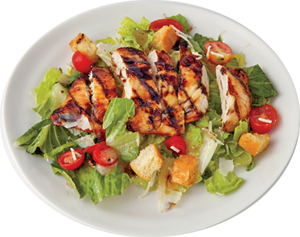 The key to making long-lasting changes to your diet is to be well-informed about all your food choices, whether youre shopping at the grocery store or grabbing a bite at your favorite restaurant. To lose weight, you have to burn more calories than you take in. And while its important to exercise regularly and weave as much activity as possible into your daily life (take the stairs instead of the elevator, park as far away as possible when youre running errands), the other big half of the equation is eating the right amount of calories and fat. That doesnt mean butter, cream, salt, or sugar should be MIA in your meals. The big picture of healthy eating means everything in moderation. For adults, experts have recommended daily caps on salt (aim for less than 2,300mg a day, under 1,500 mg if youre 51 or older or have high blood pressure, diabetes or chronic kidney disease), sugar (less than 25 grams of added sugar), and fat: no more than 20% to 35% of your calories should come from fat, with the majority of those fats being the good kind, including poly- and monounsaturated, and limiting saturated fat.
The key to making long-lasting changes to your diet is to be well-informed about all your food choices, whether youre shopping at the grocery store or grabbing a bite at your favorite restaurant. To lose weight, you have to burn more calories than you take in. And while its important to exercise regularly and weave as much activity as possible into your daily life (take the stairs instead of the elevator, park as far away as possible when youre running errands), the other big half of the equation is eating the right amount of calories and fat. That doesnt mean butter, cream, salt, or sugar should be MIA in your meals. The big picture of healthy eating means everything in moderation. For adults, experts have recommended daily caps on salt (aim for less than 2,300mg a day, under 1,500 mg if youre 51 or older or have high blood pressure, diabetes or chronic kidney disease), sugar (less than 25 grams of added sugar), and fat: no more than 20% to 35% of your calories should come from fat, with the majority of those fats being the good kind, including poly- and monounsaturated, and limiting saturated fat.
Of course, these are general guidelines, and you should have a conversation with your doctor or a dietitian to determine exactly what your personal limits should be. Knowing your own parameters will help you make smart food choices, track what you consume, and have what you want while still eating healthy. Cooking at home is the easiest way to make sure you keep within your limits, but its not realistic to think that youll never eat out. In the pages that focus on dining out, our goal is to help you eat smart, given your options at that particular restaurant. Just keep in mind how your choices at the drive-thru or a restaurant figure into your calorie, fat, salt, and sugar intake for the day. Sound like a tall order? Know that making better-for-you food decisions is easier than ever, thanks to the TONS of options out there, not only when youre food shopping to cook at home, but also when you eat out.
Next page
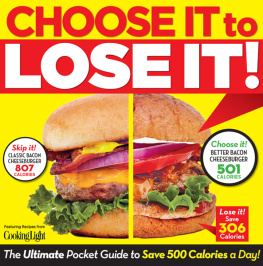
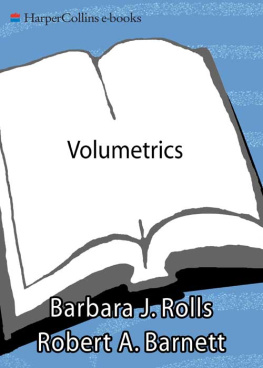

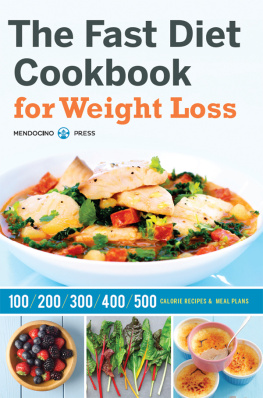
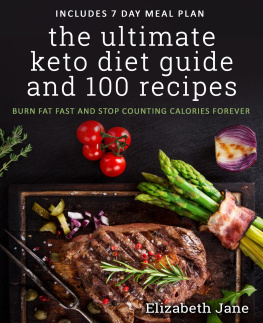
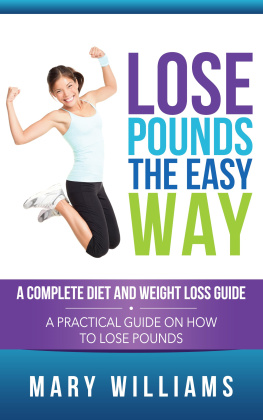
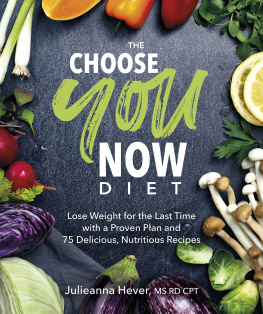
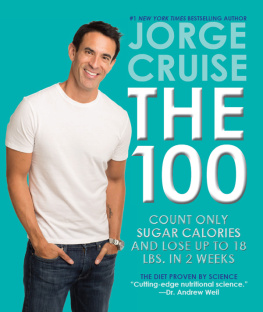
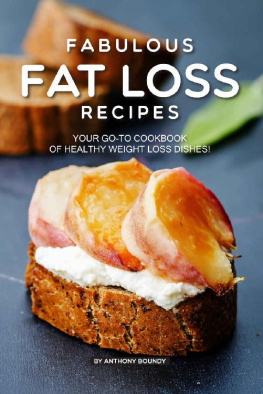
 CHOOSE IT to
CHOOSE IT to When it comes to successfully losing weight and consistently eating well, the secret is MAKING THE RIGHT CHOICES.
When it comes to successfully losing weight and consistently eating well, the secret is MAKING THE RIGHT CHOICES.  And when we say choices, we arent talking about picking a bland turkey sandwich over the cheeseburger youre craving. We mean opting for a hearty burger with toppings that has 300 fewer calories. Or going to your favorite Italian restaurant and ordering pasta, but customizing the rest of your mealand even the dishso you eat 400 calories less than you typically would. You can absolutely ditch extra calories and eat better without sacrificing what your taste buds crave.
And when we say choices, we arent talking about picking a bland turkey sandwich over the cheeseburger youre craving. We mean opting for a hearty burger with toppings that has 300 fewer calories. Or going to your favorite Italian restaurant and ordering pasta, but customizing the rest of your mealand even the dishso you eat 400 calories less than you typically would. You can absolutely ditch extra calories and eat better without sacrificing what your taste buds crave.  Choose It to Lose It is a real-world guide to effortlessly downsizing your calorie count.
Choose It to Lose It is a real-world guide to effortlessly downsizing your calorie count. DOWNSIZING YOUR DISHES CAN HELP YOU EAT LESS | Participants in a Cornell University study were given 34- or 17-ounce bowls for their ice cream. 7 NUTRITION MYTHS BUSTED With all the conflicting nutrition advice out there, its easy to get flustered when youre trying to make good food choices. 7 NUTRITION MYTHS BUSTED With all the conflicting nutrition advice out there, its easy to get flustered when youre trying to make good food choices.
DOWNSIZING YOUR DISHES CAN HELP YOU EAT LESS | Participants in a Cornell University study were given 34- or 17-ounce bowls for their ice cream. 7 NUTRITION MYTHS BUSTED With all the conflicting nutrition advice out there, its easy to get flustered when youre trying to make good food choices. 7 NUTRITION MYTHS BUSTED With all the conflicting nutrition advice out there, its easy to get flustered when youre trying to make good food choices. The key to making long-lasting changes to your diet is to be well-informed about all your food choices, whether youre shopping at the grocery store or grabbing a bite at your favorite restaurant. To lose weight, you have to burn more calories than you take in. And while its important to exercise regularly and weave as much activity as possible into your daily life (take the stairs instead of the elevator, park as far away as possible when youre running errands), the other big half of the equation is eating the right amount of calories and fat. That doesnt mean butter, cream, salt, or sugar should be MIA in your meals. The big picture of healthy eating means everything in moderation. For adults, experts have recommended daily caps on salt (aim for less than 2,300mg a day, under 1,500 mg if youre 51 or older or have high blood pressure, diabetes or chronic kidney disease), sugar (less than 25 grams of added sugar), and fat: no more than 20% to 35% of your calories should come from fat, with the majority of those fats being the good kind, including poly- and monounsaturated, and limiting saturated fat.
The key to making long-lasting changes to your diet is to be well-informed about all your food choices, whether youre shopping at the grocery store or grabbing a bite at your favorite restaurant. To lose weight, you have to burn more calories than you take in. And while its important to exercise regularly and weave as much activity as possible into your daily life (take the stairs instead of the elevator, park as far away as possible when youre running errands), the other big half of the equation is eating the right amount of calories and fat. That doesnt mean butter, cream, salt, or sugar should be MIA in your meals. The big picture of healthy eating means everything in moderation. For adults, experts have recommended daily caps on salt (aim for less than 2,300mg a day, under 1,500 mg if youre 51 or older or have high blood pressure, diabetes or chronic kidney disease), sugar (less than 25 grams of added sugar), and fat: no more than 20% to 35% of your calories should come from fat, with the majority of those fats being the good kind, including poly- and monounsaturated, and limiting saturated fat.